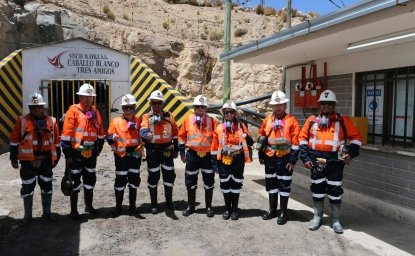Morgan Bazilian, Greg Clough and Simon Lomax
The Biden administration’s pause on liquefied natural gas (LNG) export approvals has been a political lightning rod ever since it was announced in late January.
U.S. Energy Secretary Jennifer Granholm recently promised the pause will be over in a matter of months, once federal officials have completed a review of the climate, environmental and economic impacts of LNG exports.
But House Speaker Mike Johnson has signaled that Republicans in Congress will demand the immediate lifting of the pause in exchange for congressional approval of foreign aid for Ukraine in its war with Russia. Likewise, Texas and 15 other states filed a federal lawsuit last month seeking to end the pause.
Time will tell if these political and legal challenges succeed or fail. But if the U.S. Department of Energy (DOE) does manage to complete its review, what’s the likely outcome?
The following five data points offer some critical clues.
$1.50
This was the daily price for 1,000 cubic feet – or 1 million British thermal units – of natural gas on Feb. 20, which was “the lowest price in inflation-adjusted dollars since at least 1997,” according to the U.S. Energy Information Administration.
Some critics of LNG exports have raised fears of higher domestic energy prices. While there was a spike in natural gas prices in 2022, as Europe quickly ramped up consumption of U.S. LNG in response to the Russia-Ukraine war, those prices have quickly returned to pre-war levels and below.
50%
This is the increase in methane emissions when Russian natural gas is used instead of U.S. natural gas, according to the International Energy Agency (IEA) 2023 methane tracker.
For some other gas exporting nations, the jump in methane emissions is much higher. Algeria’s methane emissions per unit of gas produced is roughly double that of the U.S. Turkmenistan’s is 550% higher, according to IEA data.
If anything, these figures may understate the difference in methane intensities between nations.
That’s because the operation of the U.S. oil and natural gas industry is much more transparent and subject to more stringent reporting requirements than its counterparts in Russia, Algeria, Turkmenistan and other energy exporting countries.
4%
This is an estimated methane leakage rate that would make LNG and pipeline gas no better for the climate than coal.
Natural gas, which is mostly made of methane, emits roughly half as much carbon dioxide as coal when used as a fuel for generating electricity. But when methane escapes during the production and transportation of natural gas, it erodes this climate benefit, because methane traps much more heat than carbon dioxide on a pound-for-pound basis.
To be sure, no single data point can capture the full complexity of the global energy system. Not all natural gas is produced in the same way and the same can be said for coal.
Natural gas also has uses outside the energy sector – such as a feedstock for making agricultural fertilizer – which further limits the usefulness of comparisons with coal.
2.3%
This is a frequently quoted estimate for the average methane intensity of U.S. natural gas production, referenced in the White House Methane Action Plan of November 2022.
It is based on 2015 data, which is now almost 10 years old. Therefore, it does not reflect almost a decade of increasingly stringent regulations on methane emissions, introduced by state and federal environmental agencies.
In addition, over the past decade, new technologies have been developed to closely monitor oil and gas operations for methane leaks, including ground-level sensors, drone flights, aerial surveys and satellite imagery.
Those technologies are being used today to set aggressive public and private sector targets for reducing the methane intensity of natural gas to much, much lower levels. At the federal level, a newly finalized regulation from the U.S. Environmental Protection Agency is projected to reduce oil and gas industry methane emissions by 80% between now and the end of this decade.
0.2%
This is the new methane intensity benchmark for U.S. natural gas production that is currently being implemented by the Biden administration. It is also emerging as a new global standard.
For example, the European Union has proposed the same 0.2% benchmark for the production phase – also known as upstream operations – for LNG and pipeline gas imports. During last year’s climate talks, almost 50 of the world’s largest oil and gas companies also committed to achieving the 0.2% upstream methane intensity benchmark by 2030.
Meanwhile, in Asia, major LNG importers Japan and South Korea have also launched their own initiative to drive down methane emissions from the natural gas they buy from the U.S. and other suppliers.
In practical terms, these developments mean that U.S. LNG will have to comply with stringent domestic and international methane controls in the coming years.
Taken together, these five data points may explain some earlier comments from the DOE just a few days after the pause and review process was announced by the Biden White House in January.
“It will be robust analysis,” DOE assistant secretary Brad Crabtree said. “I actually believe that it will serve the industry well in terms of responding to criticism, whether it’s about domestic prices in the United States or climate implications of our exports.”
To be sure, political or legal influences may intervene before the DOE’s review process is complete.
But as things currently stand, the data is moving in the direction of lifting the pause and restarting the LNG permitting process with an updated set of parameters for assessing individual projects on their merits.
Morgan Bazilian is the director of the Payne Institute for Public Policy at the Colorado School of Mines. Greg Clough is the institute’s deputy director. Simon Lomax is a policy and outreach advisor to the institute.
Contributor

Director of the Payne Institute and Professor at the Colorado School of Mines

Wahba Institute for Strategic Competition
The Wahba Institute for Strategic Competition works to shape conversations and inspire meaningful action to strengthen technology, trade, infrastructure, and energy as part of American economic and global leadership that benefits the nation and the world. Read more

Explore More
Browse Insights & Analysis
Amid Crisis in La Paz, Could 2025 See a Thaw in US-Bolivia Relations?

Ukraine’s Energy Future: A Modern Blueprint with American Inspiration




